

The COVID-19 pandemic has restricted mobility and travel; for many of us, it has limited our ability to explore new places.
How can we utilize technology to promote neighborhood exploration and encourage physical activity while building a bridge for community connection during quarantine?

We invited 18 participants to walk around their neighborhood and share 5 pictures of interesting things they encountered and explain why each picture caught their eye.
We wanted to see what types of artifacts caught their attention the most and to understand why they selected these artifacts. We consolidated all photos into a slide-deck and analyzed them by theme.
 |
A majority of users took pictures of houses, scenic views, and hidden gems |
 |
Younger users incorporated mostly selfies into their exploration photos |
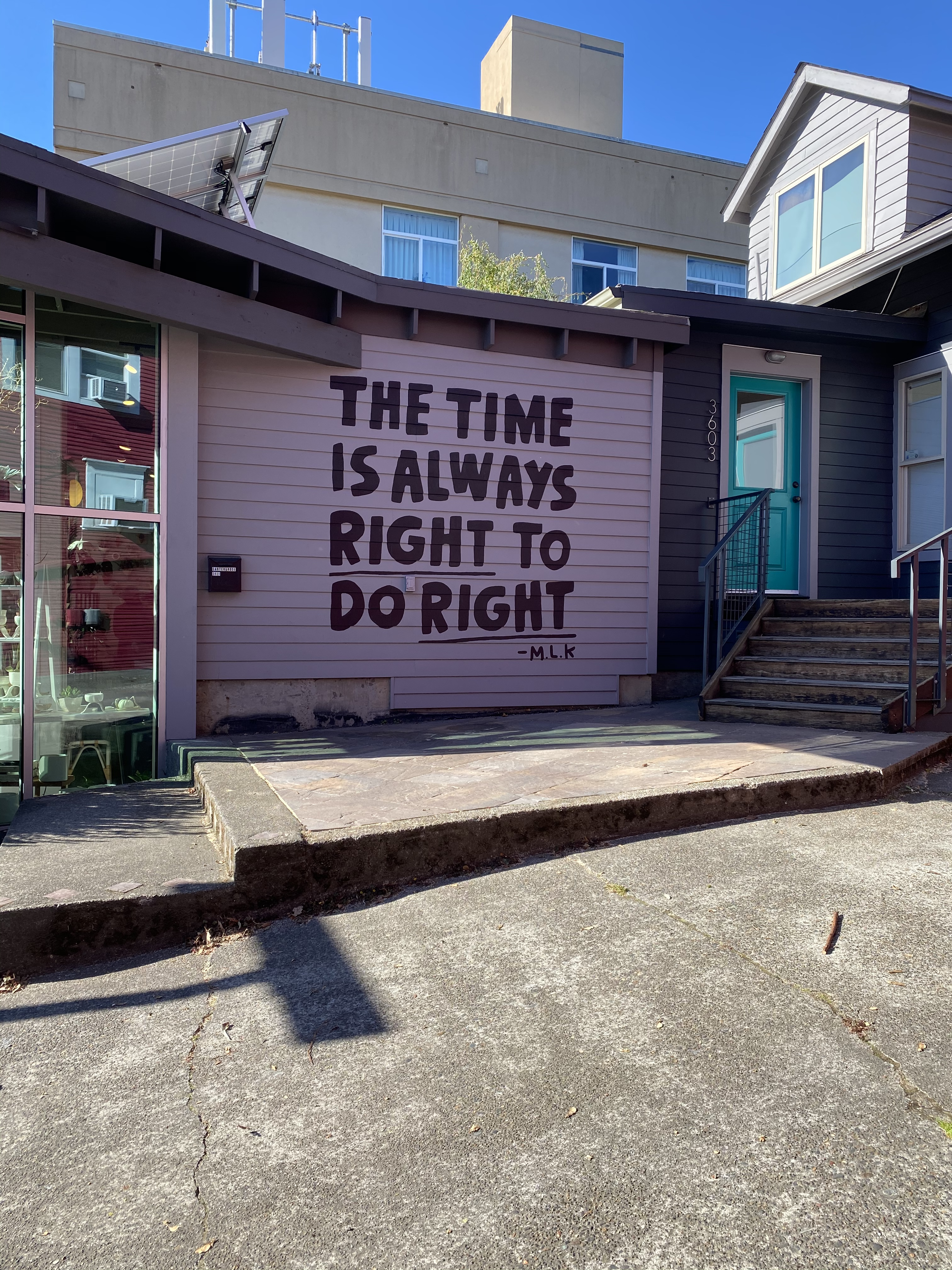
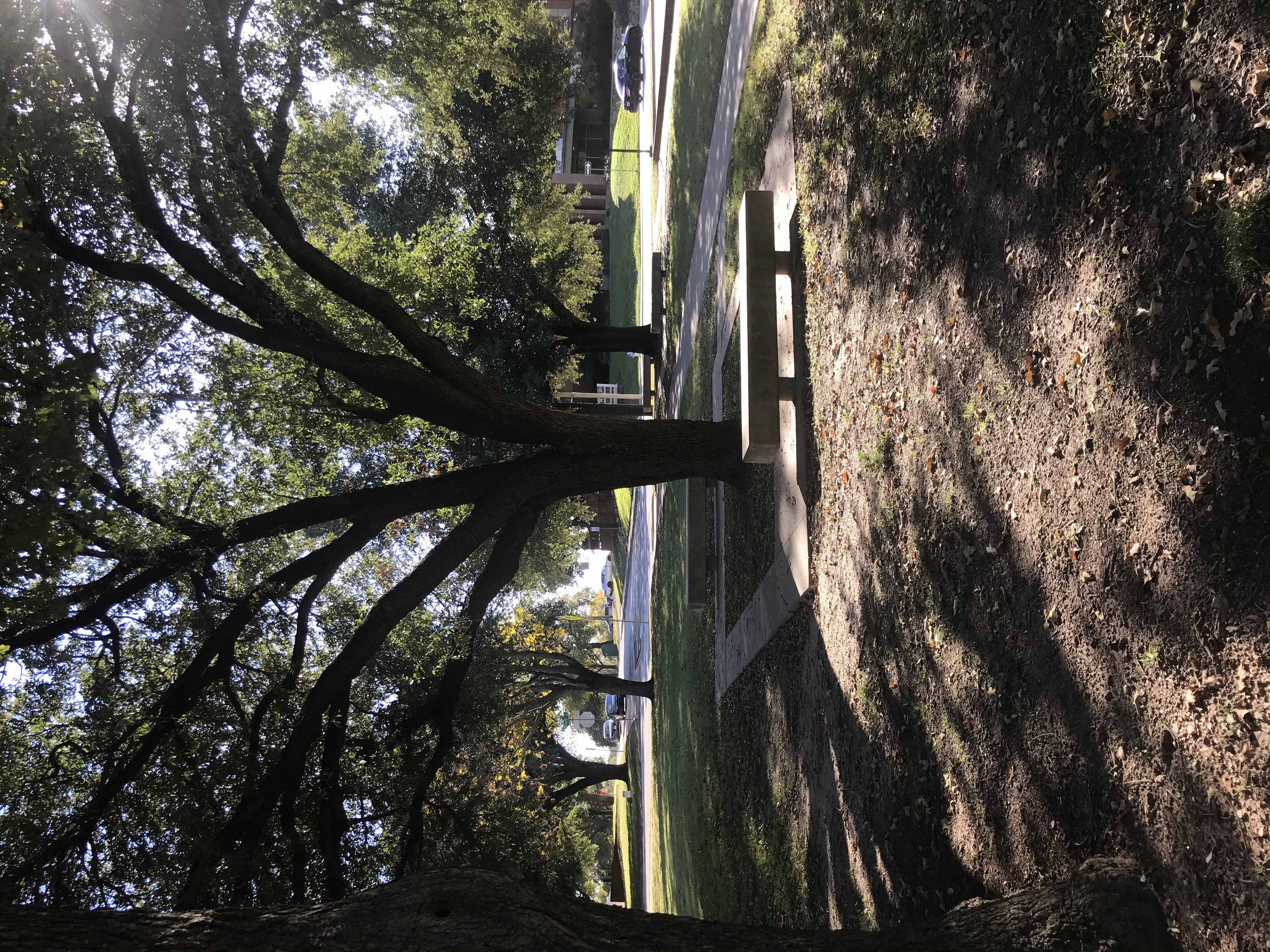
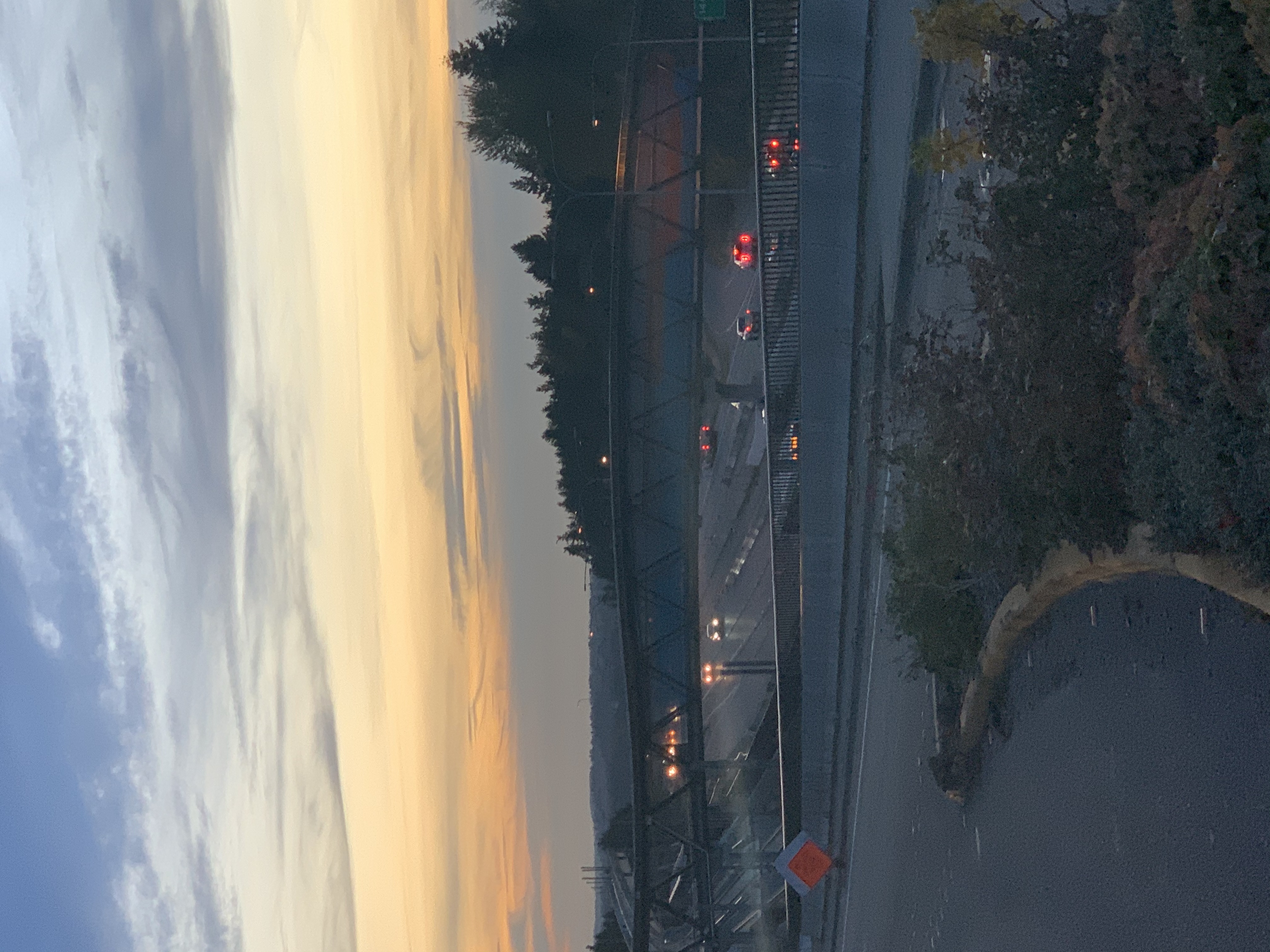
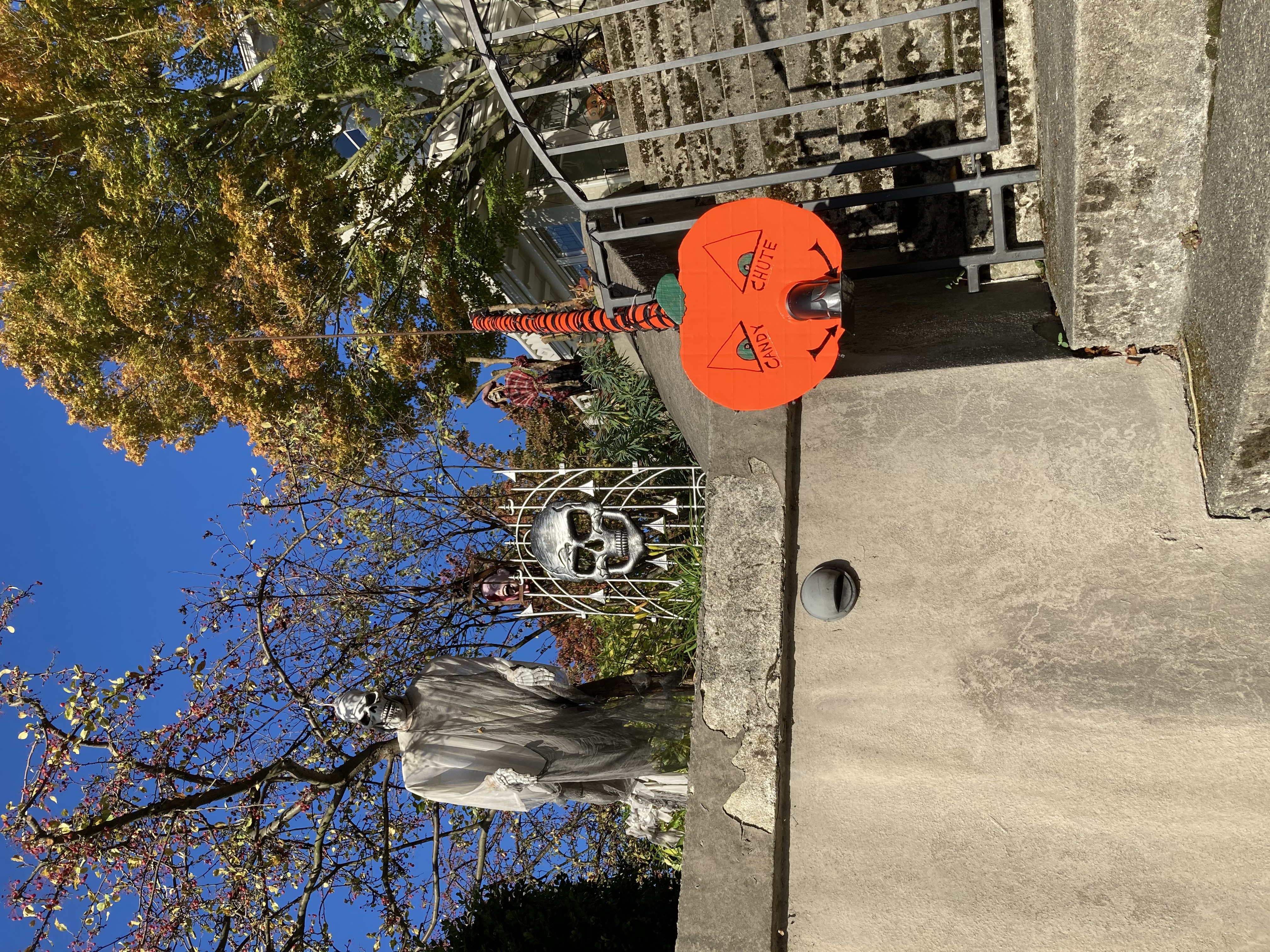
All 18 Diary study participants completed a brief survey. This mixed-methods, post-activity survey asked whether participants found taking photos to be a boring or interesting task, about the importance of getting outside to support physical and mental health during COVID, how connected participants felt to their neighborhood and how important neighbrohood connectivity was to them. We analysed our survey results in Excel and summarized our findings in a slide-deck.
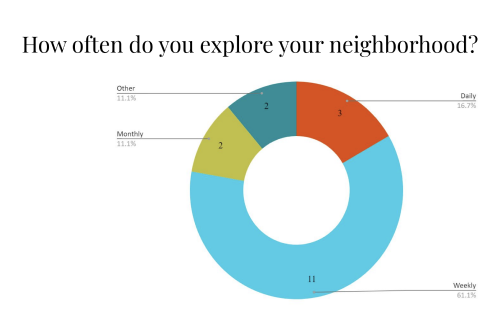
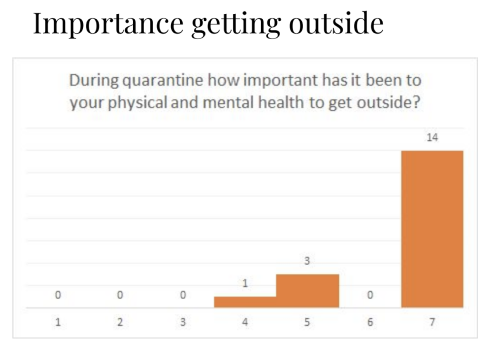
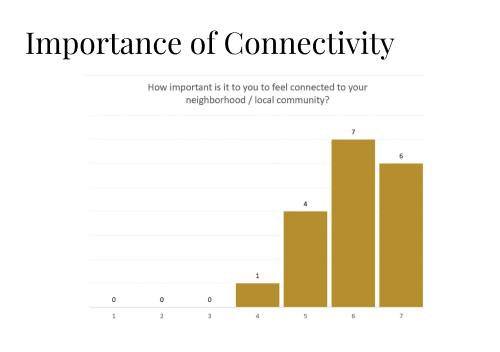
| 78% | 94% | 78% |
| felt getting outside was important to their mental and physical health during Covid-19 | reported importance in being connected to their community | explored their neighborhood at least weekly, either by walking or biking |
Competitive analysis helped us gain insight into the exploration industry, and how apps similar to Stroll incorporate community involvement. We created a list of seven different competitors, then chose 3 to analyze in-depth:
 |
Explore apps, Google Maps, lack in ‘community connection’ and main features are for search and direction, and ratings |
 |
Apps, like World Brush, that have ‘mystery’ elements have limited feature sets. |
 |
User content creation is common in explore apps (e.g. adding professional businesses) |
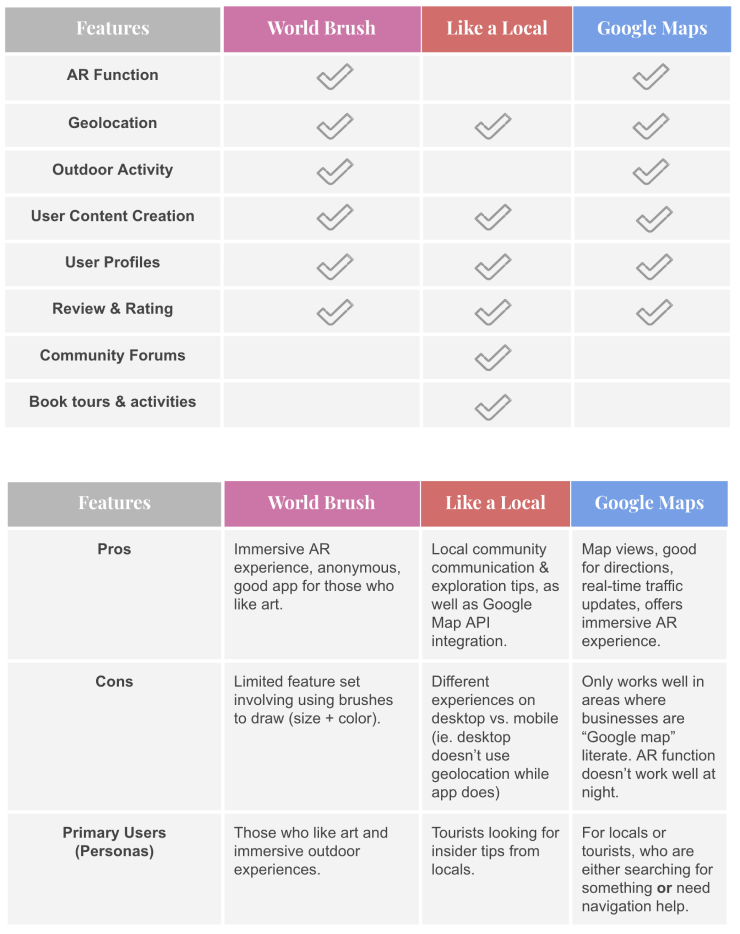
By designing an application that includes users who want to explore neighborhoods and/or create content, we wanted to cover multiple types of users with different behaviors and goals. Wanda Wanderer and Cory Creator were chosen as our primary personas since our research found that people value connection to their neighborhood and a desire to discover points of interest.

For our first attempt at design, we each drafted up our own ideas of the apps navigation and core features. After sharing our designs, we voted on the most desirable features and confirmed the expected features of the app.
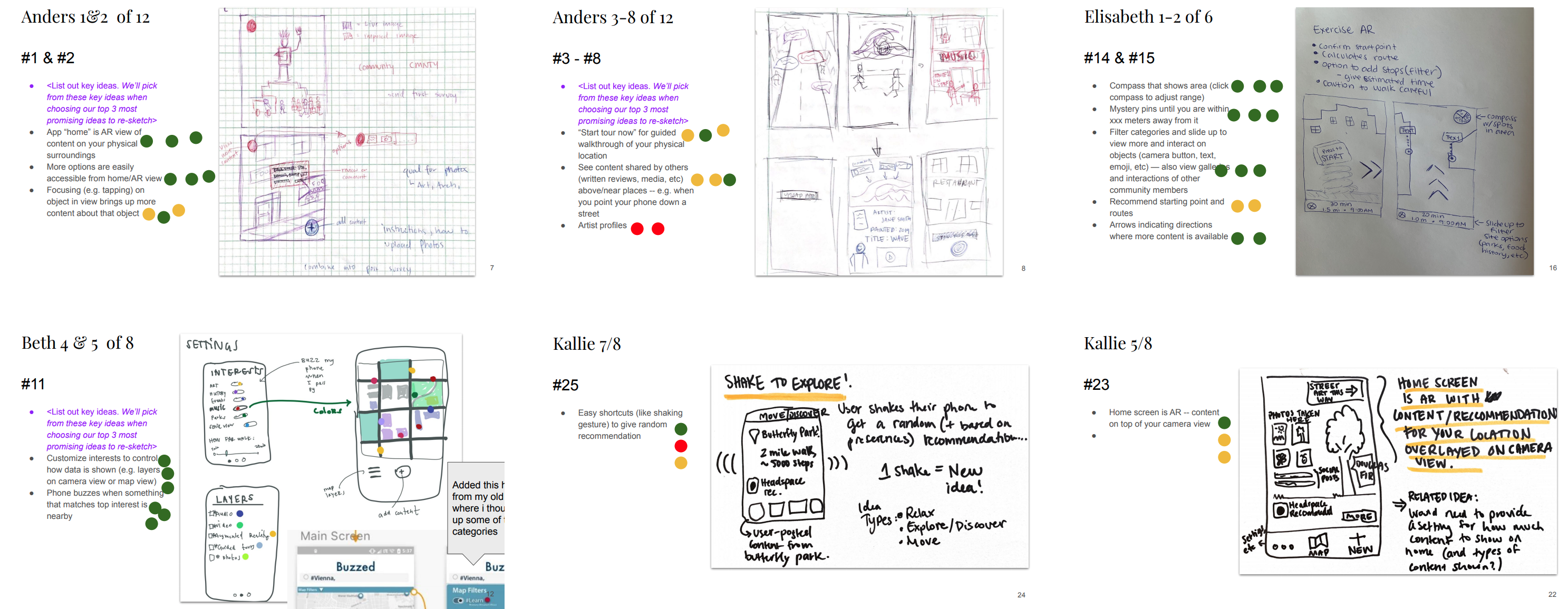
This is an example of one of our mid-fidelity prototype/user flow. This flow focuses on our "Creator" pathway, in which a user is uploading their own content to a "Pin" or point of interest they interact with.
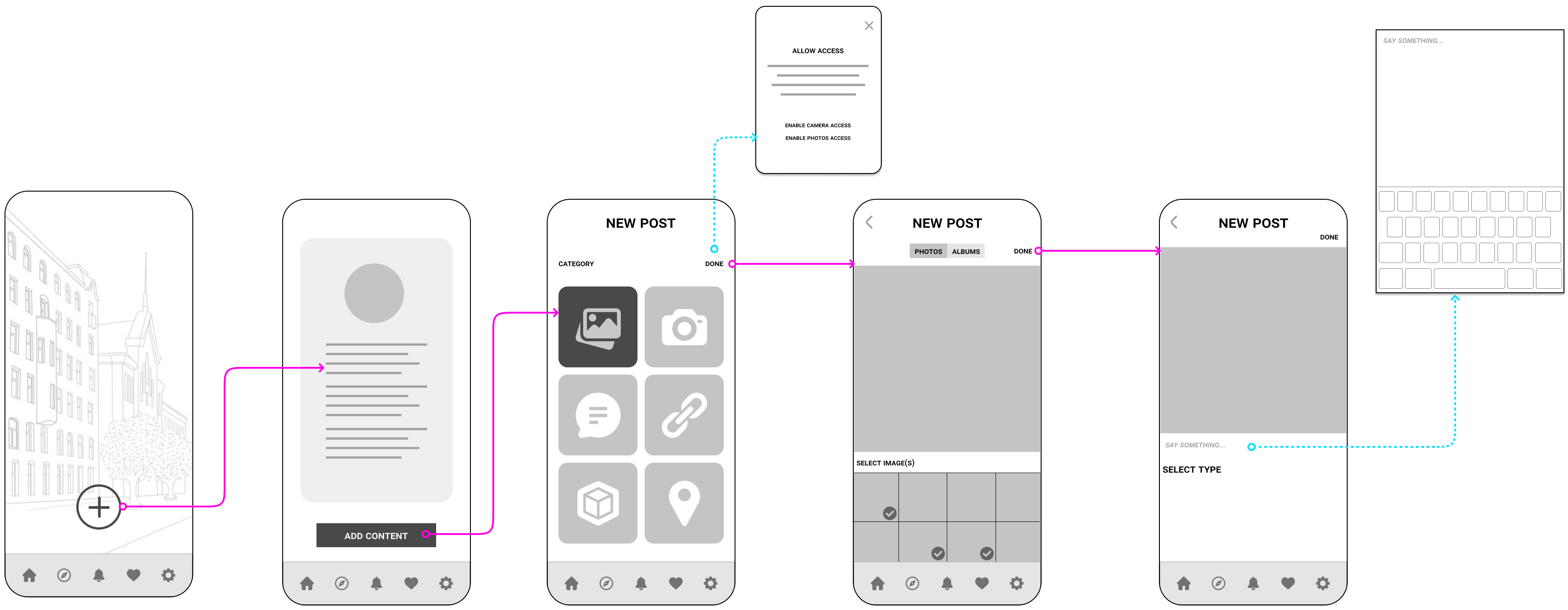
Here are a few examples of our iterative changes throughout the testing process.
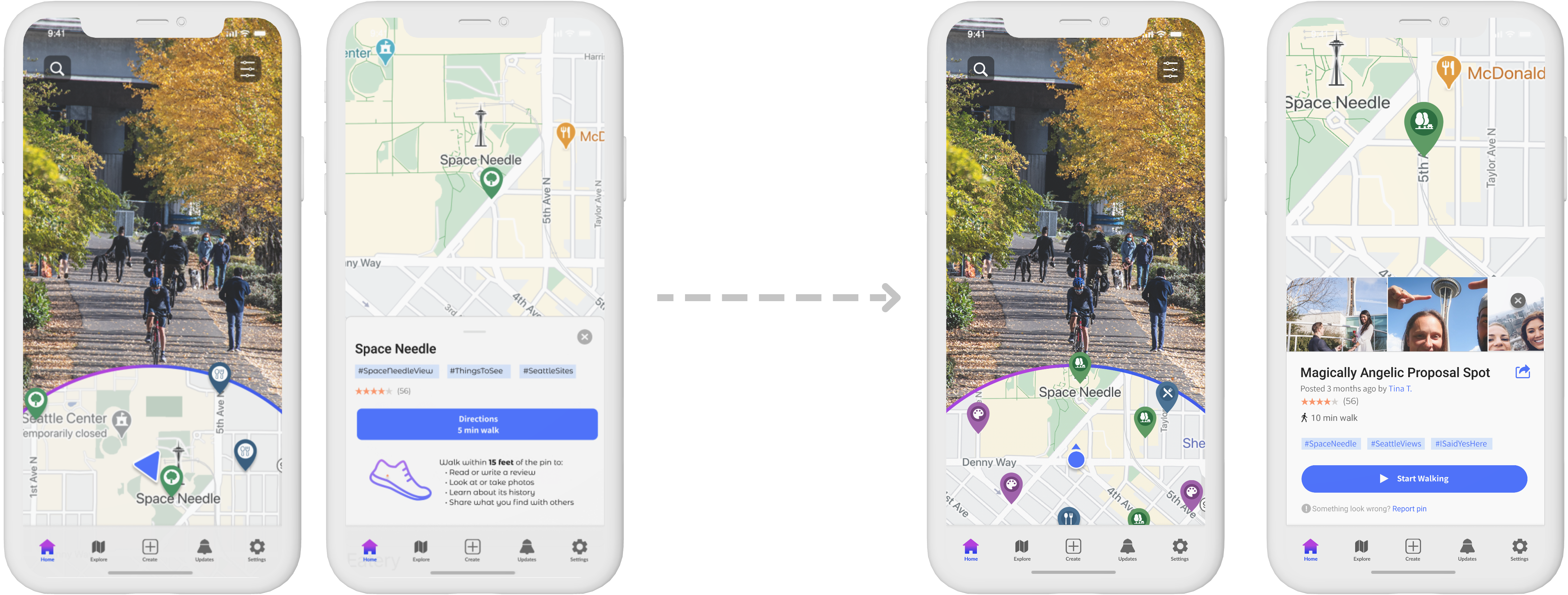
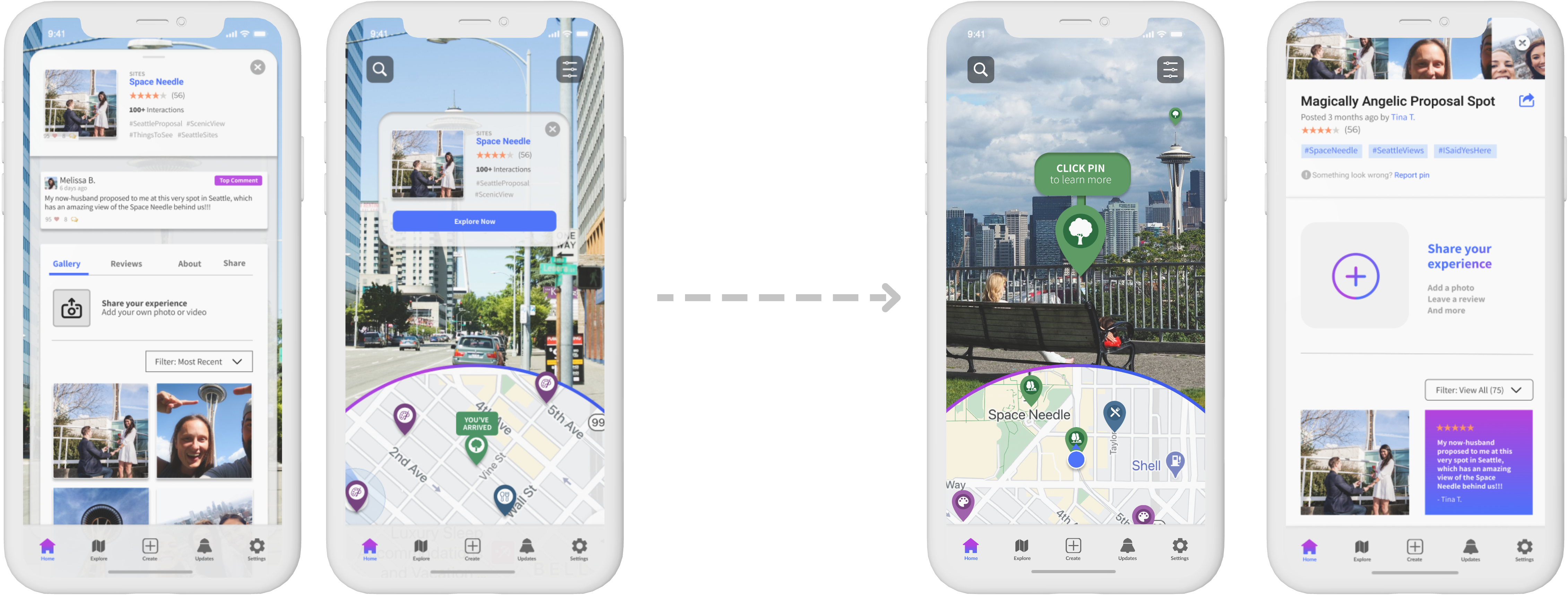
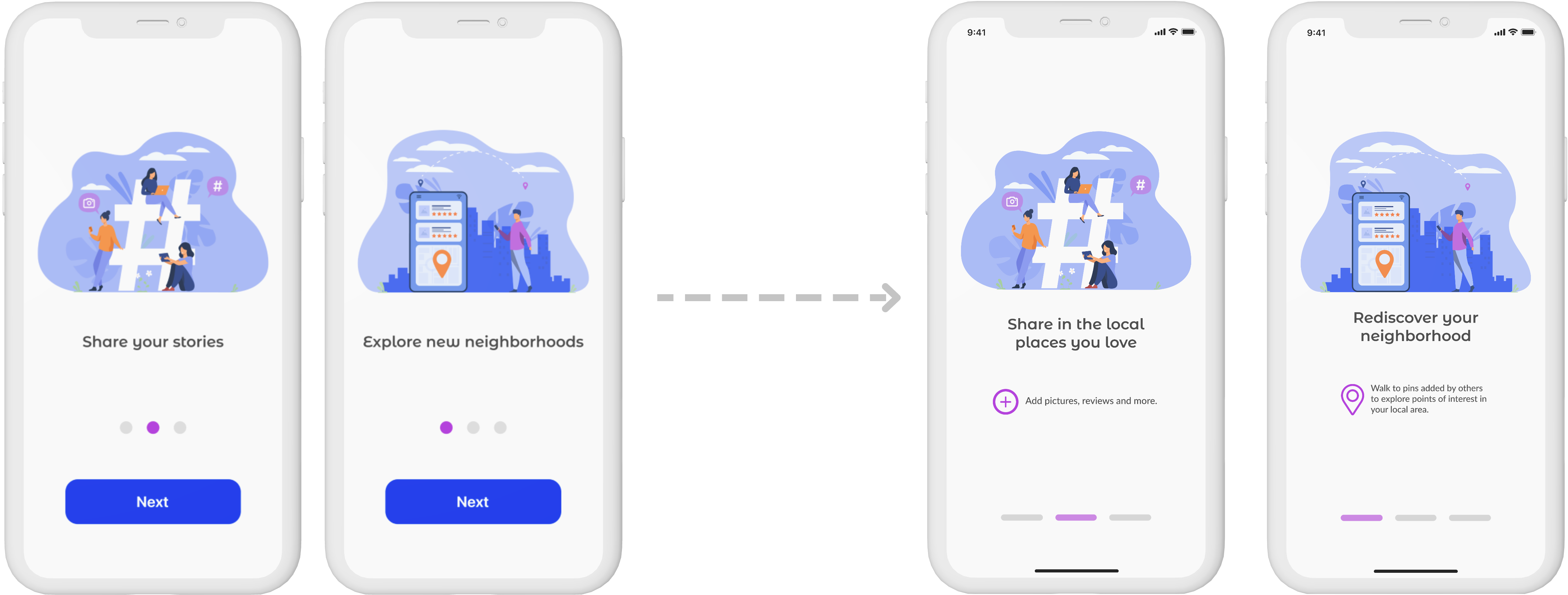
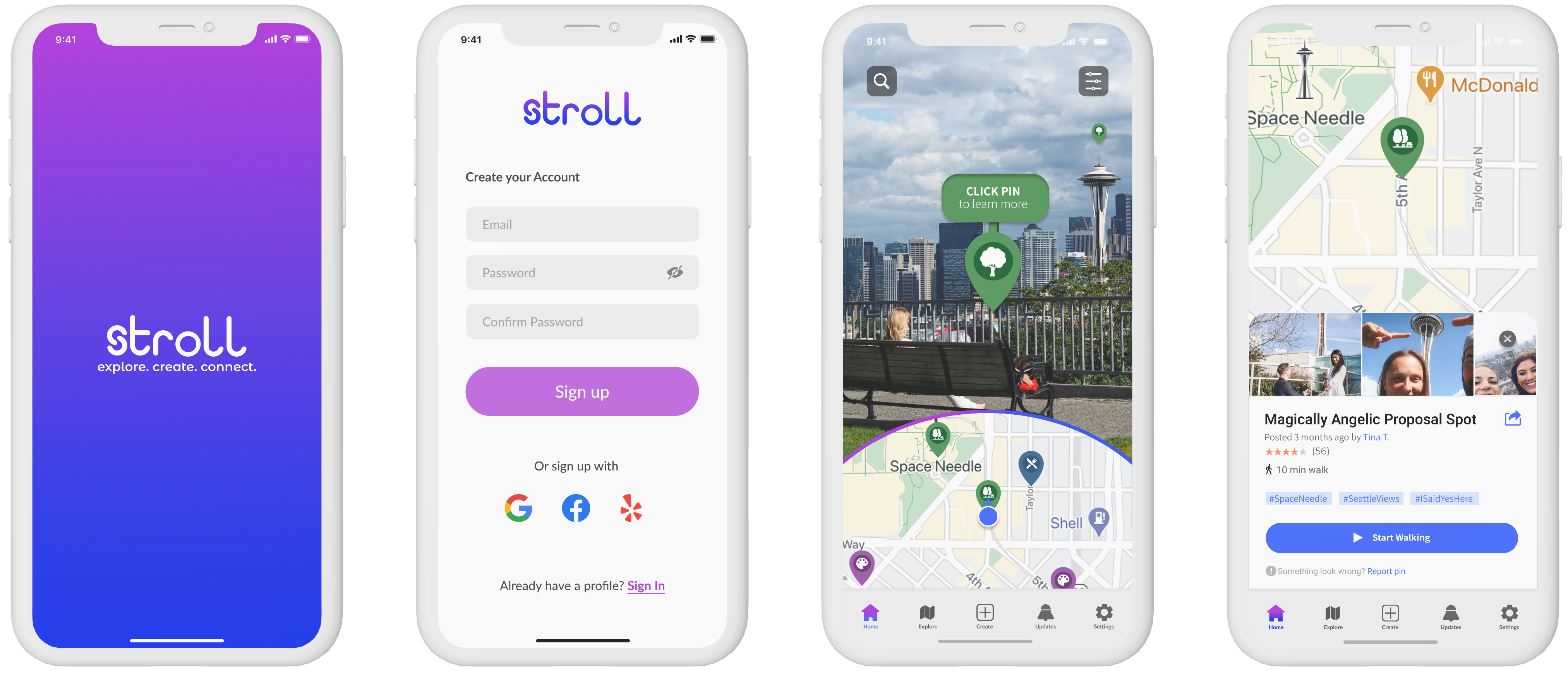
While onboarding, users get to learn about Stroll and have the ability to sync it with their social networking profiles.
From the homescreen, users can discover pins of nearby points of interest and route to a Pin destination.
Your neighborhood adventures can be customized to you.
When you're at a pin, share your experience by uploading a photo or review of the location to help others when planning their own new adventures.